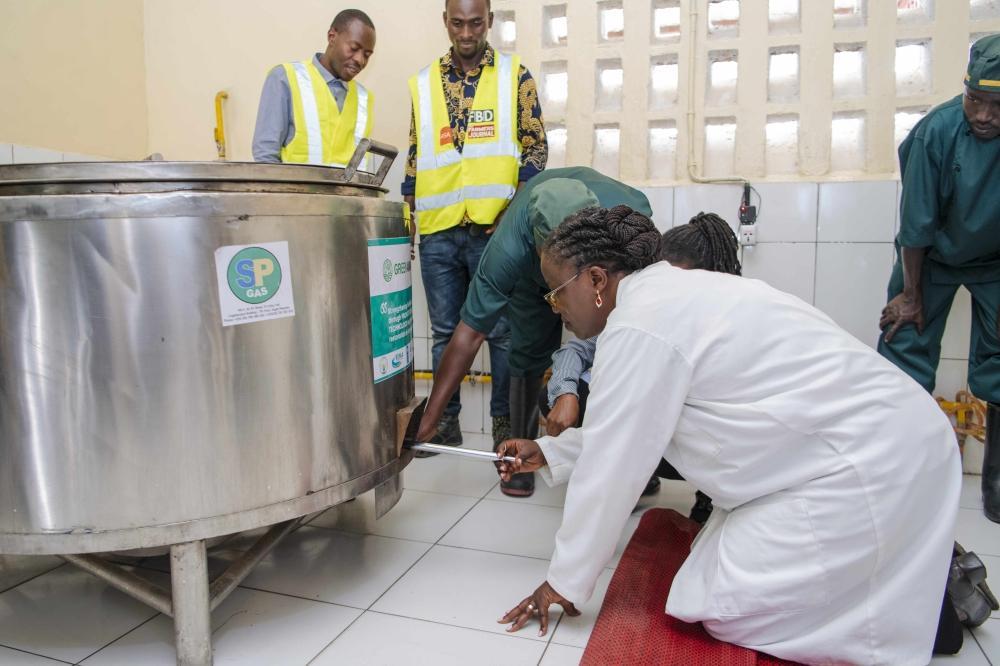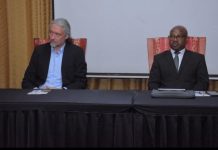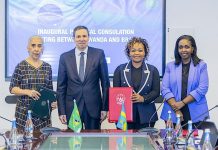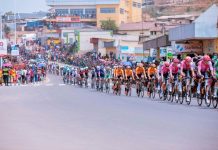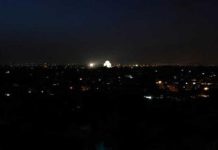Africa-Press – Rwanda. A pilot scheme has been rolled out to promote use of cooking gas in Rwandan schools as part of broader efforts to check deforestation and spur clean energy adoption.
The initiative, spearheaded by the Rwanda Environment Management Authority (REMA), is currently being tested in 20 schools located in the Southern province of the country.
The cost of implementing the pilot project, which involves using liquefied petroleum gas (LPG) for bulk cooking in the selected schools, amounts to Rwf323.9 million.
“The introduction of cooking gas in schools is essential, as these institutions have traditionally relied on charcoal or firewood for their cooking activities. A single school can consume between 150 and 200 cubic meters of firewood per term, highlighting the significant rate of deforestation.” an official from REMA said.
According to the Ministry of Education’s 2020/21 education statistical yearbook, Rwanda has over 3.8 million pupils and students enrolled in 9,645 schools, including nursery, primary, and secondary schools. Out of this total, 3.48 million students attend public and government-subsidized schools.
REMA selected five schools from Kamonyi, Nyanza, Ruhango, and Gisagara districts. This move aims to address the environmental impact of intensive biomass energy use in those districts, which has led to deforestation and degradation of both forests and agricultural land.
The successful implementation of the pilot project is expected to save approximately 263,000 hectares of degraded forests. REMA is focused on demonstrating to schools and partners the benefits of transitioning from firewood to cooking gas, which include cost-effectiveness, time-saving, and improved human health.
Once the pilot phase is completed, REMA plans to collaborate with the Ministry of Education to scale up the project across the country.
School representatives have expressed their support for the use of cooking gas. Father Andre Mbarushimana, the Dean of Studies at Saint Bernadette secondary school in Kamonyi district, highlighted the environmental and hygiene benefits of cooking gas and the reduced cooking time compared to firewood. Jacques Hakizimana, the Head of Collège Christ-Roi de Nyanza, emphasized that while firewood is still being used, the cost of using cooking gas for cooking rice and porridge is lower.
The Minister for Environment, Jeanne D’arch Mujamariya, has stressed the government’s commitment to reducing wood fuel consumption to 42 percent from the current 80 percent. Minister of Education, Valentine Uwamariya, acknowledged the challenge of inadequate resources faced by schools but recognized the need to address the issue of tree cutting for firewood due to the large number of students.
The Ministry of Environment also stated that with the planned local production of cooking gas, its affordability is expected to increase. In 2022, Rwanda launched the construction of a multi-million plant designed to produce compressed natural gas for cooking using Lake Kivu methane gas. The facility will have a daily production capacity of 990,000 cubic meters, with approximately 35 to 40 percent dedicated to cooking gas.
According to projections from the Ministry of Infrastructure, the demand for LPG in Rwanda is anticipated to reach over 240,000 tonnes by 2024, a significant increase from 10,000 tonnes in 2017.
For More News And Analysis About Rwanda Follow Africa-Press

